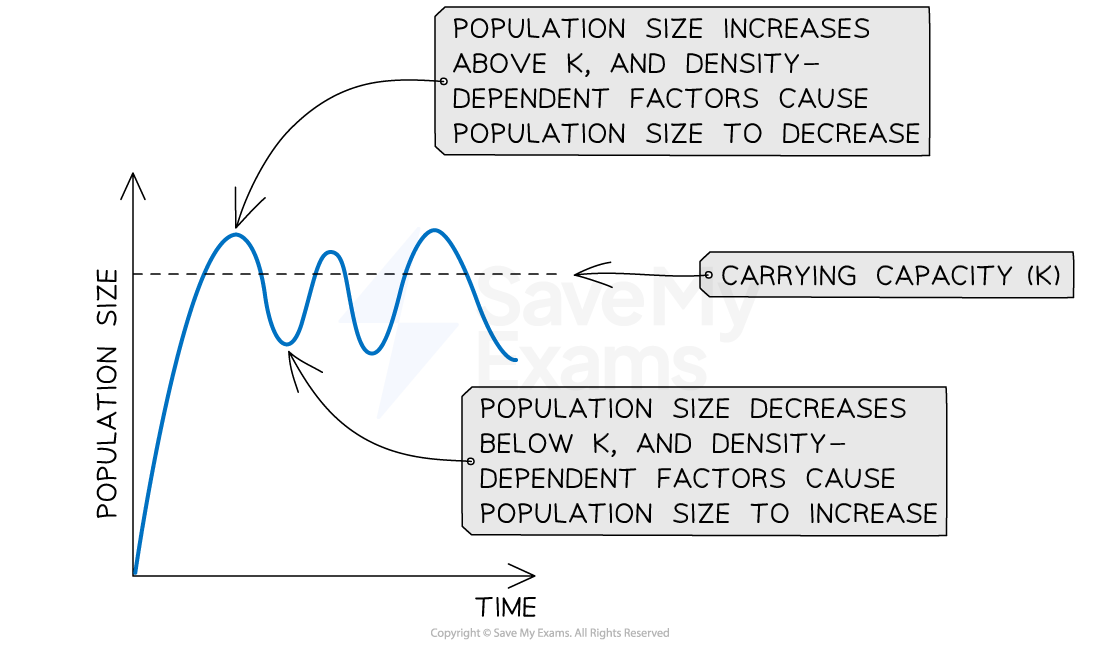Limiting Population Size
What happens the bigger a population grows?
The more resources are taken from the environment
What is the carrying capacity of an environment?

The maximum size of a population that an environment can support.
1/17
There's no tags or description
Looks like no tags are added yet.
Name | Mastery | Learn | Test | Matching | Spaced |
|---|
No study sessions yet.
18 Terms
What happens the bigger a population grows?
The more resources are taken from the environment
What is the carrying capacity of an environment?
The maximum size of a population that an environment can support.

What does K represent in population ecology?
K represents carrying capacity.
Name the factors that can affect carrying capacity.
Light availability
Temperature
Soil mineral availability
Competition for resources
Predation
Disease
Factors that animals would compete for:
Space
Mating partner
Water
Food
Shelter
Territory
Factors than plants would compete for:
Space
Fertile soil
Sunlight
Carbon Dioxide
Temperature
Water
What are density-dependent factors?
Factors that depend on population size.
What are the three main groups of density dependent factors?
Competition
Predation
Disease/parasitism/infestation
Competition
For limited resources
Predation
More intense if a population of prey becomes denser and less intense if the prey become more scarce
Disease/Parasitism/Infestation
Increase in population density because it is easier for pathogens, parasites and pests to spread
What are density-independent factors?
Factors that affect all population in a similar way
What are the four main groups of density independent factors?
Environmental change
Build up of toxins
Injury
Senescence (death from age related illness)
What is a negative feedback loop in population dynamics?
A self-regulating system where any deviation from steady-state is counteracted to promote stability.

Why does population size vary over time?
Due to density-independent or density-dependent factors
How do density-dependent factors regulate population size?
They cause fluctuations in population size, promoting stability over time.
More breeding/fewer deaths (population increases)
Density dependent factors cause more deaths/less breading (population decreases)
More deaths/less breading (population decreases)
Density-dependent factors cause more breeding/fewer deaths (population increases)